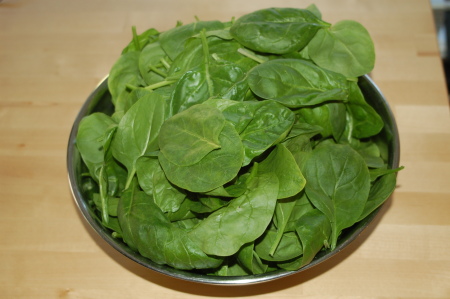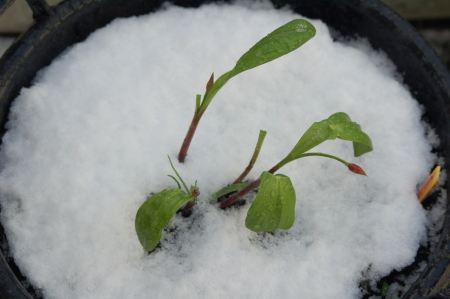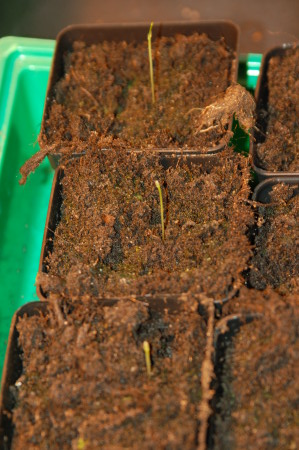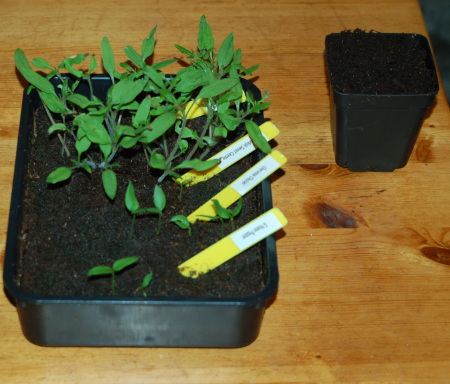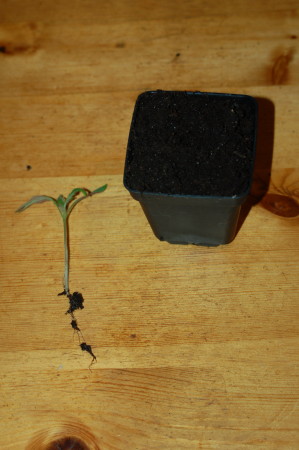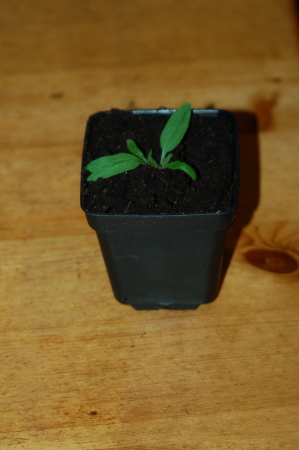These days everyone takes potatoes for granted. In many parts of the world, especially Europe, potatoes are very popular and regularly feature prominently in meals. The potato is the forth most cultivated crop after rice, wheat and corn. The potato was introduced to Europe, from it’s native Peru in the Andes mountains of South America around 1700, and quickly became one of the most important crops in the world.
Just like the potato, there is suddenly a realization that many plants commonly grown in this region have the potential for cultivation as commercial crops elsewhere in the world. Listed below are several I plan to grow in my garden this year.
I’d like to thank Frank van Keirsbilck, a Belgian member of the Seed Savers Exchange, who not only gave me some yacón tubers for my garden this year but also agreed to let me use his pictures for this post. All the pictures you see below are his and of plants he is growing. He said he may put together his own blog, so hopefully we will see more from his garden.
Mashua (also called Añu)

This plant is a member of the nasturtium, and has very peppery tasting roots. It is commonly cooked into stews, where it loses it’s harsh flavor and becomes sweet. I grew this last year in a container, but got a poor crop. I will try it again this year in the garden. Lieven, who gave me this tuber, reported a very substantial crop last year.
Ulluco


This plant is considered to be one of the most promising for commercial production. In many parts of South American these colorful tubers are sold in markets and stores. The pictures above are of solid colored tubers, but some varieties have stripes or splotches of different colors. Most of the tubers I’ve seen have been very brightly colored.
These are supposed to taste very good just eaten raw as a snack or part of a meal. They can also be cooked and eaten similar to a potato. The leaves can be eaten like spinach.
Viruses are apparently a major issue for commercial cultivation of this crop. Efforts are under way to try to produce some virus free planting stock which is expected to be significantly more productive than what is now available.
One of the major issues concerning growing attempts in northern Europe now is no one really knows the best way to cultivate this plant in the local climate. Except for being very vulnerable to frost, they are apparently grown similar to a potato. They are day length sensitive, and produce most of their tubers in October or November when there is often frost in our area.
Growing this plant promises to be a challenge.
At the time of this post, Real Seeds in the UK were offering ulluco tubers as an experimental plant for people wishing to give it a try. Apparently Frank, the person who let me use these pictures was one of the sources where Real Seeds got their tubers from.
I have found some references on the Internet suggesting planting time is important for this crop. A study in New Zealand suggested planting closer to the summer solstice was preferred to an early planting. I also came across a UK grower who suggested starting it indoors under lights, then planting it out later.
I will divide my tubers in three groups. The first has already been planted out. The second is potted and growing indoors under a light. The third is still in storage. I will plant out these latter groups in several weeks.
Oca


Oca can be boiled, baked, fried, mixed fresh with salads, or pickled in vinegar. Cultivation is reported to be very easy, but viruses are also an issue in this crop which could impact commercial yields. According to the book mentioned above, the commercial importance of this crop is second only to the potato in it’s native Andes.
I have some Oca tubers both from my friend Lieven as well as from Real Seeds in the UK.
Yacón
You can see some pictures of this plant on Søren’s blog.
This plant is related to the dahlia, and produces large tubers which store well. These tubers can be cooked, but most people say they are best eaten raw. They are very sweet, and are very high in inulin similar to Jerusalem Artichokes. This gives them a nice sweet flavor, but can also cause flatulence in some people.
Inulin can also be converted easily to ethanol, making this plant a possibly interesting source for biofuel for use in cars.
Plants normally produce heavy yields, often 10-20 Kg per plant. Many people who grow lost Incan crops report this to be one of the most rewarding for the home garden.
Tarwi
This plant is a variety of Lupin, and is supposed to be one of the most attractive lost Incan crops.
Similar in nutritional composition as soy beans, this plant provides a good source of protein. It can be prepared in many of the same ways as soy beans and also just eaten by itself as a snack, especially when the seeds are in their fresh mature state. The seeds contain bitter alkaloids making them initially inedible, but these alkaloids are water soluble and can be removed with several days of soaking and rinsing with water.
This plant is nitrogen fixing, and so is useful as a green manure crop.
I have ordered some Tarwi from a Seed Savers Exchange member living in Peru, which I expect to arrive in time for planting this year.
Quinoa
I have been eating and enjoying quinoa for years now. Also called Incan rice, it is cooked exactly the same as normal rice and is an excellent substitute in many dishes.
When you purchase commercial quinoa, it is usually treated in order to remove it’s bitter alkaloids. When you grow it your own garden, you need to do this yourself by soaking it in water overnight and thoroughly rinsing before using.
I have purchased some Rainbow quinoa from Real Seeds for planting this year.
